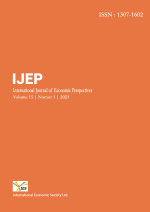A study on selected physiological and anthropometric variables among all Indian inter-university men power lifters at active competition state
Keywords:
anthropometry, physiological, power lifter, weight classAbstract
In this study, the researcher examined the selected physiological and anthropometric dimensions of twenty-four male power lifters participated and won positions at all India interuniversity power lifters championship. The data for the study were assessed on physiological and 6 anthropometric dimensions. To identify the present physiological and anthropometric state among the selected power lifters the data was collected right after their category competition ends. It was found that the anthropometric characteristics were more pronounced in heavyweights (above 90 kg) categories, who were found to be heavier, taller, more fat percentage, and had high blood pressure, and resting heart rate when compared to the lower category.
References
Bale, P., & Williams, H. (1987). An anthropometric prototype of female power lifters. Journal of sports medicine and physical fitness, 27(2), 191-196.
Brechue, W. F., & Abe, T. (2002). The role of FFM accumulation and skeletal muscle architecture in powerlifting performance. European journal of applied physiology, 86(4), 327-336.
Chiari, L., Rocchi, L., & Cappello, A. (2002). Stabilometric parameters are affected by anthropometry and foot placement. Clinical biomechanics, 17(9-10), 666-677. https://doi.org/10.1016/S0268-0033(02)00107-9
Faust, O., Hagiwara, Y., Hong, T. J., Lih, O. S., & Acharya, U. R. (2018). Deep learning for healthcare applications based on physiological signals: A review. Computer methods and programs in biomedicine, 161, 1-13. https://doi.org/10.1016/j.cmpb.2018.04.005
Fort, C., Dore, E., Defranca, N., & Van Praagh, E. (1996). Anthropometric and performance characteristics in elite powerlifters of both sexes. In First Annual Congress of the European College of Sport Science: Frontiers in sport science, the European perspective (pp. 718-719). Nice: ECSS.
Gouvali, M. K., & Boudolos, K. (2006). Match between school furniture dimensions and children's anthropometry. Applied ergonomics, 37(6), 765-773. https://doi.org/10.1016/j.apergo.2005.11.009
Johnson, G. O., Housh, T. J., Powell, D. R., & Ansorge, C. J. (1990). A physiological comparison of female body builders and power lifters. The Journal of sports medicine and physical fitness, 30(4), 361-364.
Jones, P. R., & Rioux, M. (1997). Three-dimensional surface anthropometry: applications to the human body. Optics and Lasers in Engineering, 28(2), 89-117. https://doi.org/10.1016/S0143-8166(97)00006-7
Kanca, I. N., Swadesi, I. K. I., Yoda, I. K., & Wijaya, I. M. A. (2017). The effect of aerobic and anaerobic physical training on the absorptive cells, absorption of carbohydrate and protein in small intestine. International Research Journal of Engineering, IT and Scientific Research, 3(6), 77-88.
Katch, V. L., Katch, F. I., Moffatt, R., & Gittleson, M. (1980). Muscular development and lean body weight in body builders and weight lifters. Medicine and science in sports and exercise, 12(5), 340-344.
Keogh, J. W., Hume, P. A., Pearson, S. N., & Mellow, P. (2007). Anthropometric dimensions of male powerlifters of varying body mass. Journal of Sports Sciences, 25(12), 1365-1376.
Klamklay, J., Sungkhapong, A., Yodpijit, N., & Patterson, P. E. (2008). Anthropometry of the southern Thai population. International Journal of Industrial Ergonomics, 38(1), 111-118. https://doi.org/10.1016/j.ergon.2007.09.001
Lemon, S. C., Rosal, M. C., Zapka, J., Borg, A., & Andersen, V. (2009). Contributions of weight perceptions to weight loss attempts: differences by body mass index and gender. Body image, 6(2), 90-96. https://doi.org/10.1016/j.bodyim.2008.11.004
Marchocka, M., & Smuk, E. (1984). Analysis of body build of senior weightlifters with particular regard for proportions. Biology of Sport, 1(1), 56-71.
Mayhew, J. L., McCormick, T. P., Piper, F. C., Kurth, A. L., & Arnold, M. D. (1993). Relationships of body dimensions to strength performance in novice adolescent male powerlifters. Pediatric Exercise Science, 5(4), 347-356.
Mayhew, J. L., McCormick, T. P., Piper, F. C., Kurth, A. L., & Arnold, M. D. (1993). Relationships of body dimensions to strength performance in novice adolescent male powerlifters. Pediatric Exercise Science, 5(4), 347-356.
Mayhew, J. L., Piper, F. C., & Ware, J. S. (1993). Anthropometric correlates with strength performance among resistance trained athletes. The Journal of sports medicine and physical fitness, 33(2), 159-165.
Niedermeyer, E. (1997). Alpha rhythms as physiological and abnormal phenomena. International journal of psychophysiology, 26(1-3), 31-49. https://doi.org/10.1016/S0167-8760(97)00754-X
Peter, V. F., & Raza, S. (2019). Profile of relative strength among various weight categories of senior national women weightlifters. International journal of linguistics, literature and culture, 5(4), 19-24.
Staron, R. S., Hagerman, F. C., & Hikida, R. S. (1981). The effects of detraining on an elite power lifter: a case study. Journal of the neurological sciences, 51(2), 247-257. https://doi.org/10.1016/0022-510X(81)90103-9
Vargas, M. L. F. P., & Winter, S. (2021). Weight on the bar vs. weight on the scale: A qualitative exploration of disordered eating in competitive female powerlifters. Psychology of Sport and Exercise, 52, 101822. https://doi.org/10.1016/j.psychsport.2020.101822
Wiltbank, M. C., Gümen, A., & Sartori, R. (2002). Physiological classification of anovulatory conditions in cattle. Theriogenology, 57(1), 21-52. https://doi.org/10.1016/S0093-691X(01)00656-2
Published
How to Cite
Issue
Section
Copyright (c) 2021 Dagar Pro. R.K.S., Vineet Verma

This work is licensed under a Creative Commons Attribution 4.0 International License.
Allows users to: distribute and copy the article; create extracts, abstracts, and other revised versions, adaptations or derivative works of or from an article (such as a translation); include in a collective work (such as an anthology); and text or data mine the article. These uses are permitted even for commercial purposes, provided the user: gives appropriate credit to the author(s) (with a link to the formal publication through the relevant URL ID); includes a link to the license; indicates if changes were made; and does not represent the author(s) as endorsing the adaptation of the article or modify the article in such a way as to damage the authors' honor or reputation. CC BY







